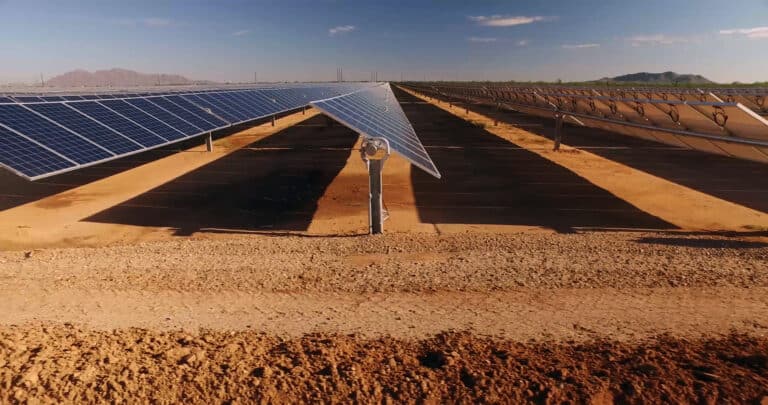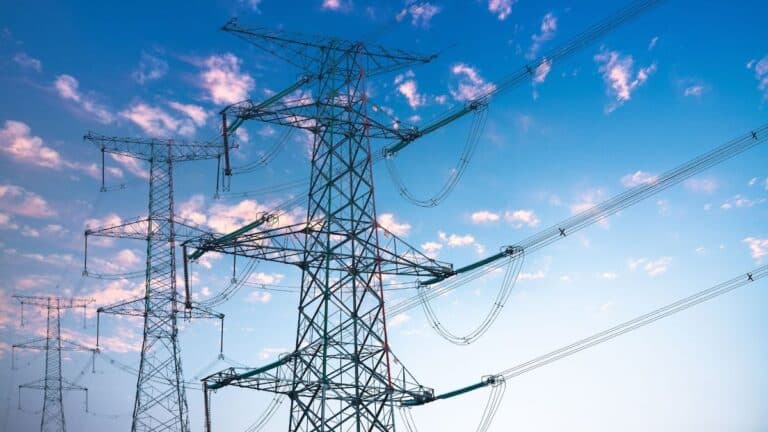With 24 percent of greenhouse gas emissions coming from the transport sector, and more than 40 percent of those emissions caused by passenger road vehicles,[1] the electrification of passenger road transport has become a focus of efforts to decarbonize the transport sector. At COP26, 38 national governments, 47 city and regional governments, 11 automotive manufacturers, 28 fleet owners, and several investors and financial institutions committed that by 2035 all new sales of cars and vans sold in leading markets would be zero-emission vehicles.[2] However, questions remain about whether consumers, grids, supply chains, and investment are ready for such a transformation. In this piece, the Center on Global Energy Policy’s Dr. Tom Moerenhout addresses these questions and explores how remaining obstacles to 100% electrical vehicles (EVs) can be overcome.
Q: Will expected EV adoption requirements place a huge cost burden on consumers?
A: No. Depending on fuel and electricity prices, and when considering the full cost incurred across the entire lifetime of the vehicle, EVs are sometimes already cheaper than vehicles with internal combustion engines (ICE) in certain places.[3] This is the case for medium-sized cars in the EU bought today, and will be for small- and large-sized cars by 2024 and 2026, respectively.[4]
It is true that there is still a difference in terms of the initial purchasing cost. The most important cost component of an electric vehicle is the battery, so the up-front cost of electric vehicles is largely determined by battery costs. The average price of lithium-ion battery packs fell by 89 percent between 2010 and 2020, and continues to fall.[5] In 2020 alone, prices fell by 13 percent.[6] This drop explains why EVs have gained competitiveness recently. Industry experts expect that further price reductions will mean that EVs in light vehicle segments in Europe will reach up-front price parity between 2025 and 2027.[7]
In 2020, the average battery cost for EVs was around US$137 per kilowatt hour (kWh).[8] The industry has long considered a battery cost of US$100/kWh,[9] which is expected to be reached by 2024, a benchmark for price parity with ICE vehicles in terms of up-front costs.[10] However, prices would need to fall below that level for heavier or longer-range vehicles, which require a higher battery capacity per vehicle, to compete with their ICE equivalents. Costs would then need to fall to around US$60-80/kWh.[11] Industry players expect battery pack prices to dive below US$100/kWh by 2024,[12] US$80/kWh by 2026, and US$60/kWh by 2029.[13] If this projection pans out, the purchasing costs of EVs will be lower than those of ICE vehicles by the end of the decade, when most of the EV adoption requirements will come into force.
The availability of charging infrastructure is perhaps as large a concern as up-front costs. Private markets do not have many incentives to invest in charging infrastructure in poorer remote areas. This problem could potentially be overcome by active public sector involvement to ensure that remote, rural areas do not bear the brunt of EV mandates.
Q: Can electricity grids handle the additional load required for widespread EV adoption?
A: Right now, no, but with additional investment, yes. The global number of chargers is expected to climb from about 10 million in 2020 to about 120 million in 2030. The latter number would need to swell to 210 million to remain on track with sustainable development.[14] To accommodate this number of chargers, installed charging capacity would need to increase from around 0.1 TW today (for 10 million chargers) to respectively 1 TW (for 120 million chargers) or 1.7 TW (210 million chargers) in 2030. In terms of required generation, that would mean an increase of around 25 TWh in 2020 to respectively 330 TWh or 550 TWh in 2030.[15] In a full net-zero scenario with 100 percent EVs, the required additional power demand could add up to 8,500 TWh.[16]
In the US, a recent analysis suggested that the grid capacity would have to increase by more than a third if EVs are to make up 85 percent of cars by 2050.[17] A 2020 study estimated that power sector investments of US$75 to $125 billion would be needed to support 20 million EVs in the US by 2030. That figure includes the cost of supplying 1 to 2 million additional public chargers and an additional 60 to 96 TWh of annual electricity.[18] To bring 40 million EVs on the road, an investment of about US$200 billion would be needed.[19]
For this reason, experts suggest that more investment is needed in charging infrastructure and grid capacity in particular (for both public and private charging).[20] To support 20 million EVs in the US by 2030, investment would be needed in electricity generation (US$30 to $50 billion), transmission and distribution upgrades (US$15 to $25 billion), and chargers (US$30 to $50 billion).[21]
Q: Are supply chains ready for a rapid transition to EVs?
A: Supply chains need considerable investment to be ready for the exponential growth of EVs. At present, three challenges related to EV supply chains stand out.
- Like in other sectors, the EV sector is facing a shortage of semi-conductors, which is already delaying the production of EVs.[22] EVs require more than twice as many semiconductors than ICE vehicles require.[23]
- Battery raw material prices and availability can form a supply chain problem. Global lithium-ion battery demand is driven by passenger EVs. By 2030, it is expected that around 85 percent of battery demand will be coming from EVs, compared to 54 percent today.[24] This shift will lead to a huge increase in demand for metals. Compared to 2019, in 2030 cobalt demand is expected to increase threefold, lithium demand ninefold, copper demand tenfold, and nickel and aluminium demand fourteenfold,[25] and investments must be made to meet that demand. Otherwise, metal prices and, consequentially, cathode and EV prices may not decrease as fast as expected. In a high price scenario, diving below US$100/kWh could be delayed from 2024 to 2026.[26] Besides the financial and technical side of metal supply, there are also geopolitical challenges around some key minerals, including lithium and cobalt. Almost half of worldwide lithium reserves are in Chile, even though only a little more than 20 percent of lithium is produced there.[27] Lithium in Chile is defined as a “non-concessionable” mineral, which puts limits on extraction and production, and reserves production for the public sector or publicly approved concessions.[28] Geopolitical challenges are even more pronounced when it comes to cobalt supply. More than half of cobalt reserves are in the Democratic Republic of the Congo (DRC), and more than two-thirds of the metal is produced there.[29] Cobalt production in the DRC has been mired with allegations of fraud and corruption,[30] but also with human rights violations, including the use of child labor. About one quarter of product cobalt comes from artisanal mines, but this cobalt often ends up being indistinguishable from industrially produced cobalt in global markets. This reality has already led to a class-action lawsuit against Apple, Google, Microsoft, Dell, and Tesla.[31] Although this lawsuit was dismissed in November 2021,[32] the reputational damage it caused moved battery producers to reduce their reliance on cobalt.
- China dominates key supply chain stages. Currently, about 80 percent of global raw material refining and of global battery cell manufacturing occurs in China,[33] and around 41 percent of all EVs sold are manufactured there.[34] A more globally competitive EV- and component-manufacturing business will be needed to facilitate the security of supply, and ultimately to create more competition, which should assist with deeper innovation and price reductions.
Q: How much investment will be needed, and where will it come from?
A: Although investment in EVs and batteries is rapidly scaling up, more will be needed. An estimated US$2.5 trillion in public and private investment globally, or about five times current levels, would be needed to shift to 100 percent EVs.[35] New analysis has suggested that global automakers are planning to spend more than US$500 billion on EVs and batteries through 2030.[36] This figure is up from pre-COVID-19 investment levels, which were around US$300 billion, with China being the main export destination of that investment, at around 45 percent, followed by European countries—especially Germany—and the United States.[37]
This investment will have to come from both the public and private sectors, but will also be driven by consumer spending. The share of government spending to incentivize EVs as a percentage of total consumer spending has been declining year on year. In 2020, consumer spending on EVs was around US$120 billion worldwide, double what it was in 2018 and about 8 times more than government spending in 2020.[38]
The trend in consumer spending is, of course, not only driven by individuals, but also by companies. In recent years, FedEx committed to transitioning to a full electric fleet by 2040,[39] and DHL committed to the same by 2050.[40] Amazon committed to net zero by 2040,[41] and Walmart committed to electrifying its entire fleet by that year.[42] These commitments are sending very powerful market signals and are already backed up by specific orders. Two of the more recent examples include the order of 100,000 EVs from Rivian by Amazon[43] and 100,000 from Tesla by Hertz.[44]
Q: What type of public incentives have we seen since the start of COVID-19?
A: Before COVID-19, purchase subsidies were gradually being reduced in key markets such as China and the US, leading to a reduction in EV sales. This changed as a result of sound Green Keynesian stimulus policies in the wake of the COVID-19 pandemic. For example:
- China extended its EV purchasing subsidies by US$1.6 billion and added US$1.5 billion for charging infrastructure.[45]
- Germany spent US$2.5 billion on premiums for EV buyers and US$2.5 billion on expanding EV charging infrastructure.[46]
- As part of its recently approved infrastructure bill, the US dedicated US$7.5 billion to charging infrastructure over the next five years,[47] and the proposed Build Back Better bill would include a refundable tax credit for EV purchases by companies that have produced less than 200,000 qualifying vehicles.[48]
However, these public incentives are, similar to the required investment figures described earlier, insufficient to guarantee the acceleration of EV adoption to the level required by a net-zero scenario. In most countries, policies target a certain number of EVs sold and chargers installed. Increasing this number will be necessary in the coming years.
Notes





